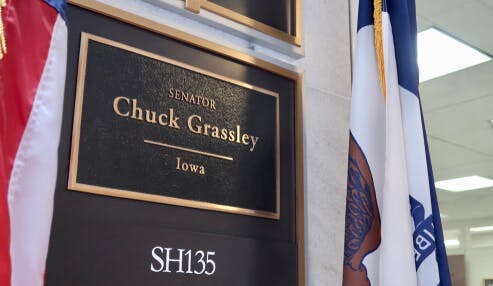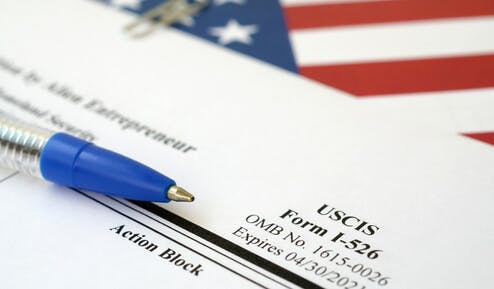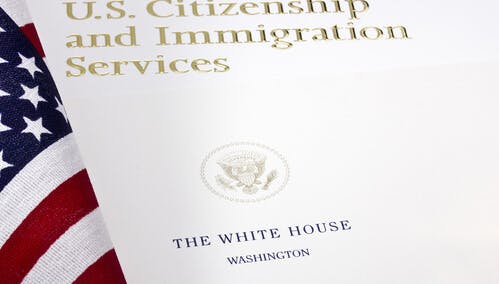USCIS has released Q4 I-526 form submission statistics and the numbers are trending in the right direction, albeit from a very low base. While the I-526 receipts plummeted in Q2 to just 21 (due to the investment amount increase), receipts have gone up in the following quarters to 40 and 53, respectively. This is likely a sign the industry is slowly adjusting to the sticker shock of the new amounts. Another positive is that in Q4 the agency adjudicated 1,140 I-526 petitions, up over 23% from the 922 processed in Q3, and the highest number since Q1 of FY2019.2020 was a tough year for EB-5. Much of this was due to the new regulations implemented on November 21, 2019. With an increase to the minimum investment amounts (the first ever since the regional center program was introduced in 1992) and the effects of Covid-19, the EB-5 world predicted “sticker shock” would keep investors on the sidelines for some time. The statistics, while not cause for celebration yet, appear to support this thinking.FY2020 I-526 quarterly comparisonQuarter Received Adjudicated Approval RateQ1 4,264 455 84%Q2 21 904 79%Q3 40 922 62%Q4 53 1,1140 79%FY2020 I-526 summaryQ1 was the last opportunity for investors to file before the new regulations saw minimum investment amounts rise to $900,000 and $1,800,000 for most existing projects. Q2 saw a precipitous decline to just 21 filings — much as the industry anticipated. The rise to 40 filings and then 53 in Q4 is slow movement but movement nonetheless in the right direction.What’s perhaps even more heartening is that processing increased each quarter in FY2020. After doubling in Q2, it made a marginal uptick in Q3 and then increased by 218 filings in the final quarter; representing a quarter-over-quarter increase of 23%. It’s a positive sign that EB-5 processing may finally be on the path to greater efficiency even before the more immigration-friendly Biden administration takes over.The approval rates have stayed fairly consistent in Q1, Q2 and Q4, with a big drop in the third quarter. With much smaller sample sizes, it may be difficult to read too much into approval numbers at this point.FY2013 – FY2020 I-526 yearly comparisonQuarter Received Adjudicated Approval Rate Pending2013 6,346 4,642 80% 7,1312014 10,928 6,381 80% 12,4742015 14,373 9,807 89% 17,3672016 14,147 9,367 81% 20,8042017 12,165 12,243 92% 24,9922018 6,424 15,122 90% 14,3942019 4,194 4,673 78% 13,7632020 4,378 3,421 75% 15,063FY2013 – FY2020 I-526 yearly summaryWhile petitions filed in FY2020 actually exceeded the prior year, this number has a giant qualifier as the mad rush to beat the new regulations gave us the most skewed I-526 numbers ever in a calendar year. Looking ahead, expect low filings that will probably increase each passing quarter; but with the current regulations, the days of receiving several thousand I-526 filings in a quarter are literally and figuratively history.Conversely, while the FY2020 number of adjudicated I-526 petitions is the lowest in the past eight years, some optimism seems justified, based not only on the upward trend but on the more immigration-friendly Biden Administration and imminent confirmation of Alejandro Mayorkas, who as the leader of the Department of Homeland Security, (DHS), will also oversee the EB-5 program.The approval rate of just 75% is the lowest in the past seven years. While the sample size, again, makes inferences difficult, it seems to coincide with the 2019 numbers. FY2017 remains the benchmark for positive approvals with a 92% rate.Pending I-526 petition numbers are higher year-over-year but with filings dropping to a tiny fraction of what they once were, and with the trend of higher processing efficiency expected to continue, the pending I-526 number should decrease steadily going forward.ConclusionWith very, very low filing numbers and processing improving, and a new administration in power, things may be looking up for prospective EB-5 investors. If the FY2020 Q4 processing number merely remains static, USCIS should be able to process over 4,500 I-526 petitions each year. That means the agency would take about three and one-third years to process the existing backlog. If processing continues to trend upwards faster than the increase in I-526 filings, that timeline could potentially be even shorter.
Date
Feb 25th, 2021
Comments
To leave comments you must Register first
Related Articles

Processing Times
Read
EB-5 FY 2022 Q3 processing data: I-526 numbers continue to improve but still a long way off from 2020 highs

Processing Times
Read
Top EB-5 lawyers discuss I-526e processing times: standard, priority, and expedited
Processing Times
Watch
2022 EB-5: rural advantages help businesses and investors
Global Markets
Read
2022 trends for the migration of the wealthy

Commentary
Read
What’s going on with EB-5 in 2022? What’s the future?
Processing Times
Read
5 goals on the political agenda for EB-5 in 2022 and beyond

Commentary
Read
6 immigration lawyers reflect on 2021 — and predict 2022 and beyond for EB-5

Politics & Policy
Read
EB-5 Reform and Integrity Act of 2020: IIUSA believes it’s positive and a stepping stone to more visas

Commentary
Read
The role of due diligence in EB-5 in 2021

Politics & Policy
Read
EB-5 Integrity Act 2021: Capitol Hill reauthorization update

Processing Times
Read
FY 2021 Q1 published for EB-5 I-526 & I-829 processing

Politics & Policy
Read
2021 EB-5 News: Biden’s nominee for USCIS Director aims to ‘resolve dramatically increasing processing times and backlog’


